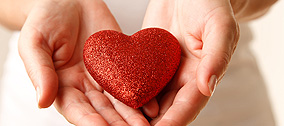Blood Donation
Effect of supplementation on blood donors.
Since blood donation is voluntary and this is a free service for the fellow man it´s natural to "guard the sources". This means that blood donors should receive iron supplementation to compensate for iron loss from the blood donated, especially if low values are detected.
This has not always been the case because of low efficacy and frequent side-effects from the non-heme iron given.
Why heme iron?
The heme and non-heme forms of iron are absorbed by different mechanisms. The usual non-heme iron remedies, such as ferrous sulphate, produce unwanted side-effects in the form of constipation, stomach pains or diarrhea. This often leads to the donors stopping taking the supplements, which in turn means that they can only donate blood perhaps once or twice a year instead of normally three times. Having low iron counts in between also diminishes the donors´ Quality of Life.
There are many negative factors influencing non-heme iron absorption itself. Among these are intake of tannins in tea and coffee. Phytates in unleavened whole grain bread, milk proteins, albumin and soy proteins may also reduce absorption. This means that a regular diet and non-heme supplements may not be enough to compensate fo iron loss.
Is heme iron enough?
Non-heme supplements at 100 mg Fe++ per dose regularly have an incidence of side-effects leading to termination of the therapy of around 30 %. Donors that have previous negative experiences will usually not take the supplements at all.
It has been observed that after a donation absorption of non-heme iron practically ceases for around four days.
30 days of supplementation with 100 mg Fe++ non-heme iron at a bio-availablity of 2 % theoretically gives 60 mg absorbed iron. At 5 %, which is unusual, the amount is 150 mg. From there on this drops depending on the factors mentioned before.
Over the long run there is also an inflation in non-heme iron absorption due to a numbing of the mucosa and a constant uneasy feeling with gastric disturbancies (not all side-effects lead to quick termination). This is because in order for non-heme iron to be absorbed it has to split from its carrier in the acidic environment of the stomach The uptake is low and this will leave free iron ions in the gut. These in themselves are highly reactive, and considered toxic to the organism.
Supplementation with 18 mg of heme iron for thirty days with a bio-availability of 20 % gives 108 mg of absorbed iron. Heme iron is very well tolerated and is known to have a side-effects ratio as placebo. This means a higher therapy success rate.
Heme iron will also not block the uptake of zinc as non-heme iron in doses over 60 mg will.
This is why heme iron tablets with a dose of 18 mg Fe++ can compete with non-heme tablets of 100 mg Fe++.
More Info
-
 Chronic diseasesChronic diseases
Chronic diseasesChronic diseases -
 Blood DonationBlood Donation
Blood DonationBlood Donation -
 Mother and BabyMother and Baby
Mother and BabyMother and Baby -
 Iron AbsoptionIron Absoption
Iron AbsoptionIron Absoption -
 Iron DeficiencyIron Deficiency
Iron DeficiencyIron Deficiency -
 Fertile FemalesFertile Females
Fertile FemalesFertile Females -
 Health / PregnancyHealth / Pregnancy
Health / PregnancyHealth / Pregnancy -
 Studies and TextsStudies and Texts
Studies and TextsStudies and Texts -
 OptiFer® Heme iron productsOptiFer® Heme iron products
OptiFer® Heme iron productsOptiFer® Heme iron products
About the Latest Action
 The OptiFer® Series of original Heme-Iron products are made in Sweden under full HACCP quality standards.
The OptiFer® Series of original Heme-Iron products are made in Sweden under full HACCP quality standards.
WHAT THE DOCTORS HAVE TO SAY
I have a number of patients that have taken heme iron preparations for years. They have kept a satisfactory iron balance without the unfortunately all-too-common side effects that are often associated with iron preparations.
Dietary-based treatment containing heme iron has few side effects and can be used efficiently to improve the iron status of women of reproductive age.
